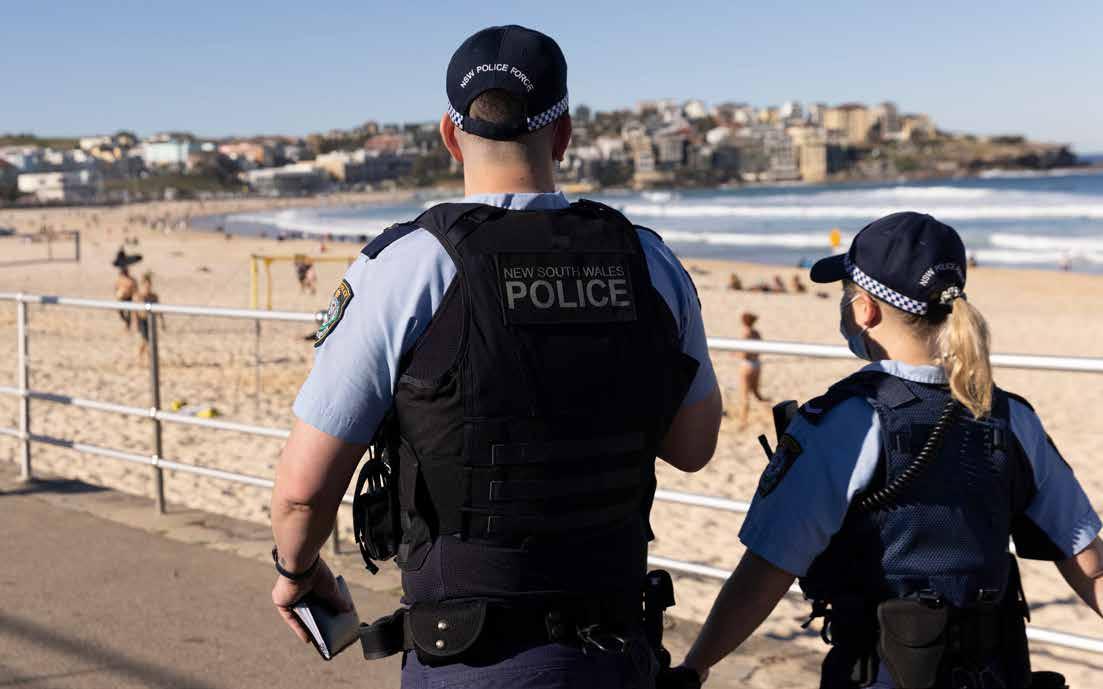
4 minute read
Western Sydney numbers
In the 2019 NSW State Election, the PANSW called on all candidates for NSW Parliament to Back the Blue and commit to a list of recommendations police officers of NSW needed to do their job, to keep the people of NSW safe, to return home safely to their families after each shift. The PANSW secured a commitment from the Government to fund an additional 1,500 police officers.
■ On Saturday March 25, 2023, NSW will again go to the polls. Since 2019, police officers have guided the state of NSW through ever increasing and diversifying challenges: from a global pandemic, to unprecedented fires and floods, all the while continuing to serve communities and tackle crimes like domestic violence, sexual assault, organised crime and drugs.
What is clear; the state of NSW continually turns to police as the universal, 24/7 problem solvers. Police officers have done an extraordinary job and will continue to do so. But now new challenges face the NSWPF: attrition from the NSWPF is at record highs, (topping 1000 officers leaving in the last financial year) and recruiting their replacements is increasingly difficult. Policing is no ordinary profession, and it is a special type of person that wants to serve their community as police officer or other emergency service personnel. There is a shortage of applicants to police and other emergency services agencies in NSW, Australia and globally. The PANSW is once again calling on all candidates to the 2023 NSW State Election to give police the resources they need to meet increasing demands.
NSW needs police in the right place at the right time. The challenges pile up, and NSW needs a plan to meet them
The number of police officers leaving the NSWPF increases every year. Last year, the number topped 1000. The reason the majority of officers are leaving is “Medically Unfit”.
The NSW Government needs to protect officers and support them to recover if they are injured, rather than discarding them, and in doing so losing their years of experience and expertise that is so hard to replace. With this many officers leaving, it makes it incredibly difficult to recruit just to keep up with attrition, let alone to increase numbers.
NSW already has one of the lowest police to population ratios in Australia, behind only the ACT (left).
This capacity challenge risks compromising response times. The number of urgent calls to the NSWPF has increased significantly in the last 10 years.
We know you are all doing everything you can to protect the people of NSW, but without a deliberate and strategic plan for police funding and recruitment to meet the demands placed on officers and Commands, it will always be challenging to meet the challenges police are called on to respond to.
The NSWPF aims to respond to 80% of urgent calls within a target time. Five years ago it responded within that target time to 78.7% of urgent calls. Last year that fell to 75% due to these challenges. If capacity issues are not addressed, it will be incredibly difficult for police officers to improve this trend.
Western Sydney needs an urgent increase of 250 police. Western Sydney is one of NSW’s most important communities. It is the 3rd largest economy in Australia, and is an important part of further economic growth, with a large proportion of NSW’s working age people calling Western Sydney home, and major infrastructure projects like the Badgery’s Creek Airport and new employment areas reliant on Western Sydney. It is a vibrant and diverse community, with people of many cultures, backgrounds, languages and ages.Western Sydney deserves services to match this importance and growth.
However, in NSW, the State with the lowest police to population ratios in Australia, Western Sydney has the lowest police to population ratio in NSW (left).
Already from the lowest police to population resourcing in NSW, this challenge will exacerbate as Western Sydney continues to be one of the highest population growth areas in NSW. The Department of Planning and Environment recorded the population of Western Sydney as 2.45 million in 2021. By 2031 it is projected to be 2.92 million. This creates a challenge to improve police response times that are already suffering from delays. The Table (right) shows the number of Police Area Commands and Police Districts within each Region that have either improved their response times to urgent calls, or gotten worse, over the past three years.
The Police Association intends no criticism of officers in relation to these statistics; we know you do everything you can every day to look after your communities. Candidates to the upcoming State election must support you with more resources to do your job.
Almost all of the Commands in Western Sydney have had to meet the challenge of an increasing workload without sufficient increases to police numbers, meaning response times have suffered.
Each Police Area Command or Police District has a target response time set according to the conditions in that area/ community. The NSWPF aims for police to respond to 80% of urgent calls within that target time (urgent calls are where there is an imminent threat to life or property).
Western Sydney (North West Metro and South West Metro) has the highest number of Commands that could not meet that objective (right).
The PANSW is calling on candidates to the 2023 NSW State Election to:
• Immediately fund an additional 250 police for Western Sydney to address current staffing challenges.
• Work with the PANSW and NSWPF to establish an agreed workforce capacity strategy to plan, recruit and resource Commands in Western Sydney according to need, rather than playing catch up in election years.
After numerous emergencies where NSW Police are not the lead agency, but are inevitably called in to solve problems no one else can, the PANSW recommended police officers be given devoted positions, funding and resources to do the job of leading emergency management right from the beginning.





